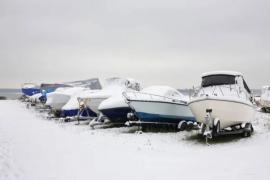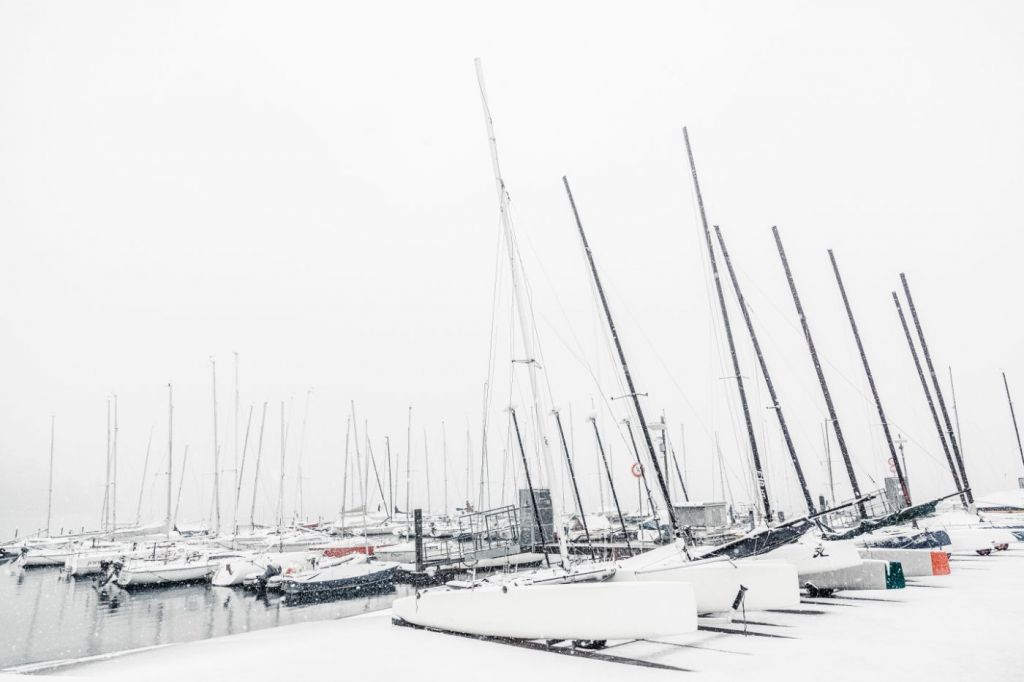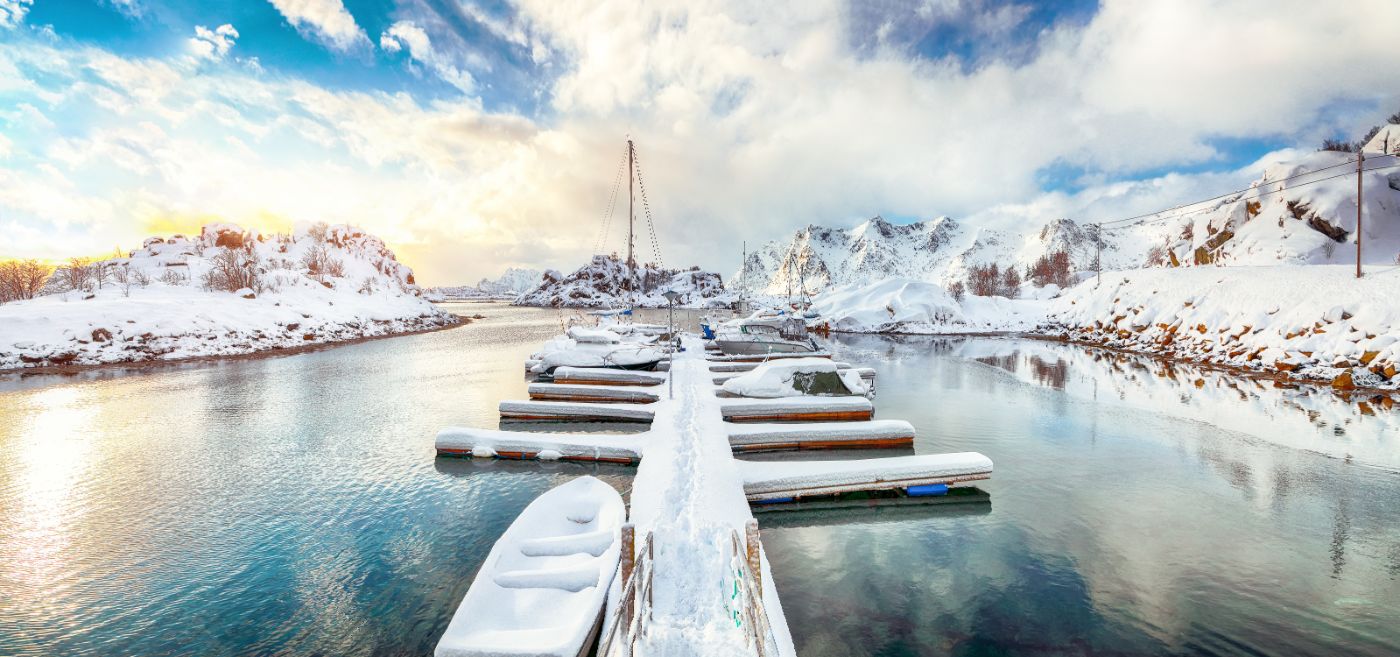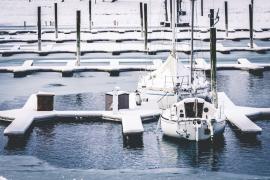At What Temperature Will a Boat Engine Freeze?
Deep in the heart of winter, when the ice and snow settles in and you're in the middle of a deep cold snap, worrying about your boat is natural. Did you use enough anti-freeze? Or worse, how about that early freeze before you get your winterizing done?
At what temperature will a boat engine freeze? Unwinterized boat engines can freeze any time the air temperature is below 28°F (-2°C) - for an extended period. Freshwater cooled engines without proper coolant can freeze below 32°F (0°C).
The good news is you can prevent freeze damage fairly easily. With proper coolant and antifreeze, you can eliminate the risk of freezing except in sub-arctic conditions.
Key takeaway:
If you haven't gotten to winterize everything yet and you see a temperature dropping to 30°F or 25°F overnight, you probably won't see immediate freezing on your boat. But a long cold period - a day or two with daytime temperatures below freezing and deeper at night - could harm your unprotected engine.
This is not a guarantee, however, and you can not count on it.

Winterize Your Boat

On this page:
It's Not Your Engine Which Freezes
It’s important to clarify that your engine doesn't actually freeze. A lump of cast iron or aluminum left in the deep, deep cold will not be harmed. Not unless it's subject to sudden, violent changes in temperature or physical damage.
It's the water inside your engine which freezes, and that can damage improperly winterized and un-winterized engines.
Water expands when it freezes, and the force it can exert in expansion is strong enough to split rubber hoses, crack iron, and rupture aluminum. When water freezes, it expands about 9% in volume and converts to a non-compressible solid, which applies massive force to anything constraining it.
Your engine is anything but a solid block of metal. It has hollow pockets in the engine block called jackets where fresh cooling water and coolant flushes to take away heat. Saltwater comes into heat exchangers, oil coolers, and other raw water-cooled components. These components are connected with hoses and channels to move the fresh and water cooler around.
Water left in these spaces is what freezes. The freezing water expands, which can crack everything from intake hoses to engine blocks.
To keep an engine from freezing, we remove all the freezable water or blend/replace it with something which lowers the freezing point well below normal outdoor temperatures.

Winterizing with Antifreeze
In theory, you could winterize your engine by blowing all the water from the various engine block jackets, coolers, and hoses. Freezing air doesn't expand, so there would be nothing to damage the engine.

Do You Have to Use Antifreeze to Winterize a Boat?
But in practice getting all the water out is tricky and unreliable, and it's better to flush existing systems out with antifreeze to ensure it fills all water jackets and tubes with something which won't freeze in normal conditions.
Freezing, Slushing and Bursting
We rate antifreeze with a temperature, for example -50°F or -100°F. This number is the temperature at which a sealed copper pipe filled with that antifreeze will burst. This does not mean the antifreeze flashes from liquid to solid at that temperature.
Propylene Glycol based antifreeze will form an icy slush well before it freezes solid. The slush doesn't expand and cause damage to boat systems. But a -50°F antifreeze may start "freezing" at 12°F to 18°F (-11°C to -7°C) and forming slush, and a -100° may start to slush at -58° to -63°F (-50°C to -52°C).
Dilution and Protection
Propylene glycol is the best antifreeze to use in winterizing boat engines and systems. Undiluted, it is expensive. Most bottles of antifreeze are diluted with water. The higher the propylene glycol to water ratio, the better the protection. You can buy antifreeze concentrated with instructions to dilute it for the protection lever.
A word of caution: take care you are diluting to the right level and make sure you flush as much water out of your engine as you can. If you have water in your engine when you winterize, some of it is likely to mix with your antifreeze and dilute it. If you put a gallon of -50° diluted antifreeze into your engine and there's a gallon of water in the heat exchanger you don't know about, you will not be getting the protection you thought.
If you're using a more dilute antifreeze, flush more aggressively. Or use stronger protection just in case there is dilution you don't know about.
Protecting Freshwater Cooling with Coolant
In the raw water side of your engine, you'll winterize by flushing out the seawater with propylene glycol. But most modern engines are freshwater cooled as well, and that coolant requires different considerations than the raw water cooling.
Engine coolant for freshwater cooling is very toxic and expensive. Regular flushing of the system is good maintenance, but you won't want to do it every winter.
Like propylene glycol, we dilute engine coolant with fresh water. You can run your engine with just freshwater, but it will overheat if the temperature exceeds 212°F. Engine coolant increases the boiling point of water to a higher temperature, allowing engines to run more effectively. But the coolant also lowers the freezing point, just like water.
As part of winterizing your boat, always check your engine coolant's cold weather protection with a coolant checker or a refractometer.
How Bad is the Freeze?
In a house, you’ll know that if it dips a little below freezing for a night, you won't have a problem with frozen pipes. Water doesn’t freeze instantly.
But if you have a long cold snap where the temperature stays below freezing for several days and nights, you'll have to watch all the pipes near the outside walls or in the garage. Boats are similar, though they are a little more sensitive than a heated house.
Practically speaking, if you haven't gotten to winterize everything yet and you see a temperature dropping to 30°F or 25°F overnight, you probably won't see immediate freezing on your boat. This should be a wake-up call to get over and get your winterizing done, it takes more than a slight dip below freezing to cause damage, and you don’t want to get caught out.
This is not a guarantee, however, and you can not count on it.
But a long cold period - a day or two with daytime temperatures below freezing and deeper at night - and your unprotected engine is at serious risk.
Alternatives to Winterizing
What can you do if you're caught out at the start of winter in a polar vortex? The quickest solution is to get an engine room heater and plug it in on your boat.
Remember - you don't have to warm your engine up to room temperature; you just have to keep it warm enough to prevent freezing. Engine room heaters heat to lower temperatures but can offer short term protection from freezing if you can't get winterized.
But the best thing to do is do it right - plan, flush everything with antifreeze, and check your coolant for protection.
Did you find the answer to your specific question?
👍 18 👎 1



Comments
Marina Richer
Hello improvesailing.com administrator, Thanks for the well-written and informative post!
Joshua Buttenshaw
Dear improvesailing.com admin, Keep the good content coming!
Leave a comment